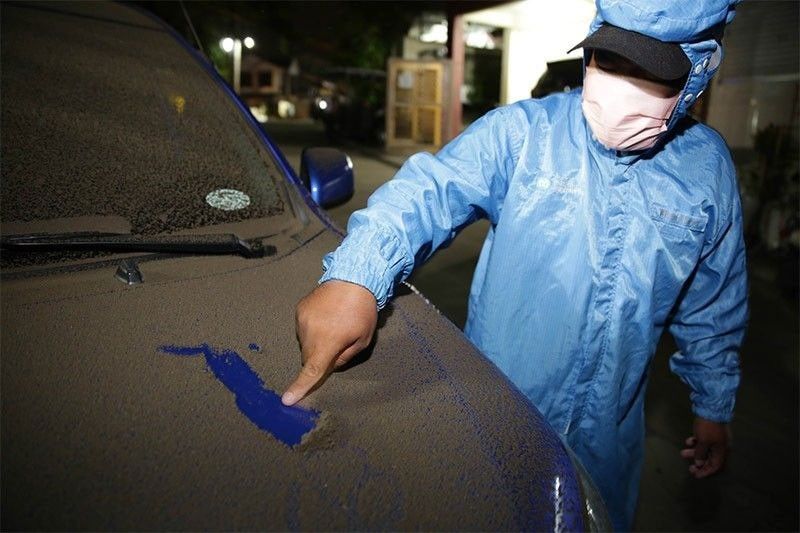‘Metro Manila ashfall may last 3 days’

MANILA, Philippines — The ashfall from the Taal Volcano eruption being experienced in southern Metro Manila may last three days even after the wind shifts its direction to the provinces of Laguna, Rizal and Quezon.
In a phone patch during the meeting yesterday of the Metropolitan Manila Development Authority with local disaster risk reduction clusters, weather specialist Chris Perez of the Philippine Atmospheric, Geophysical and Astronomical Services Administration said the ashfall may last up to three days depending on the wind condition.
The volcanic ash from Taal reached Metro Manila due to the northward wind direction that carried the toxic fumes to the metropolis and nearby provinces, Perez told the Metro Manila Disaster Risk Reduction and Management Council (MMDRRMC).
“For the next 24 hours to three days, it’s possible that the wind will shift, carrying the ash plume to Quezon, Laguna and Rizal,” he said.
But even if the wind changes direction this week, it does not necessarily spare Metro Manila from ashfall, Perez said.
“What has been deposited over the atmosphere will not be immediately cleared,” he said.
Class, work suspension
The weather bureau also recommended to the council that suspension of classes and work be retained at least in Las Piñas, Muntinlupa, Parañaque and Taguig.
Perez said these cities are heavily affected by the tail-end of the ash plume.
“I think it’s better to maintain the suspension of classes. Let’s continue to monitor updates,” Perez told the MMDRRMC.
Asked whether the current behavior of Taal Volcano could lead to a deadly explosion, an official of the Philippine Institute of Volcanology and Seismology (Phivolcs) said it is “too early” to predict the volcano’s activity.
Taal’s eruption on May 15, 1754 and in 1911 left over 1,300 casualties. Both explosions originated at the crater. The 1754 explosion caused ashfall that lasted from May to November that year, Phivolcs chief science research specialist Mylene Villegas said.
“We don’t know what it’s going to do. That is what’s mysterious about volcanoes,” Villegas said.
According to Phivolcs, Taal Volcano’s last activity was monitored on Oct. 3, 1977, which was a phreatic or steam-driven explosion on Mt. Tabaro.
The last deadliest activity happened from Sept. 28 to 30 in 1965, but the phreatomagmatic or magma and water-driven explosion occurred on Mt. Tabaro, which left 200 casualties.
Air quality
The Department of Environment and Natural Resources (DENR) advised the public to stay indoors amid the poor air quality in areas affected by Taal Volcano’s explosion, including Metro Manila.
“The ash emitted by the volcano will have a negative effect in the quality of the air we breathe. We advise the public to stay indoors as much as possible or wear masks if there is really a need to go outside,” Vizminda Osorio of the Environmental Management Bureau (EMB) said.
She said the ash or sulfur would blend with particulate matters in the air, such as smoke, dust and vapors.
“Once inhaled, these particles can affect the heart and lungs, which may cause serious health problems,” Osorio said.
Data provided by the EMB showed that CAA Road in Las Piñas, Barangay Addition Hills in Mandaluyong and TUP Campus in Taguig registered poor air quality yesterday.
“The air quality in these areas is unhealthy, especially for those with respiratory illnesses,” the DENR official said.
The air quality in Makati, Parañaque and Oranbo in Pasig was classified as “moderate or fair.” – With Rhodina Villanueva
- Latest
- Trending























